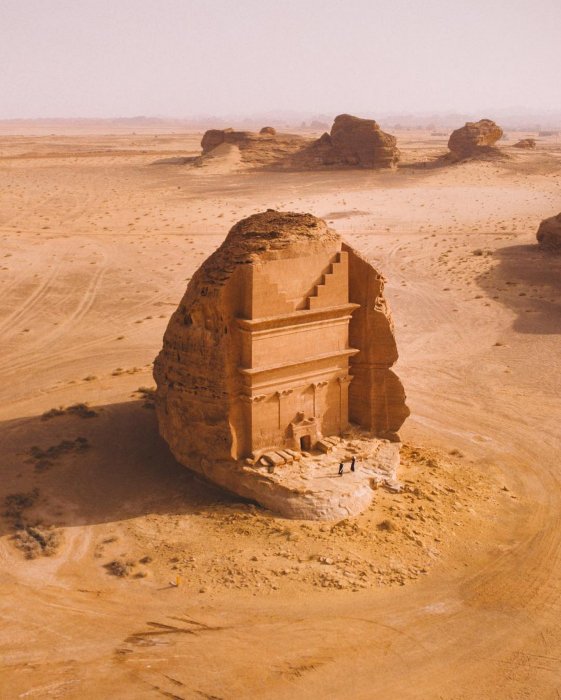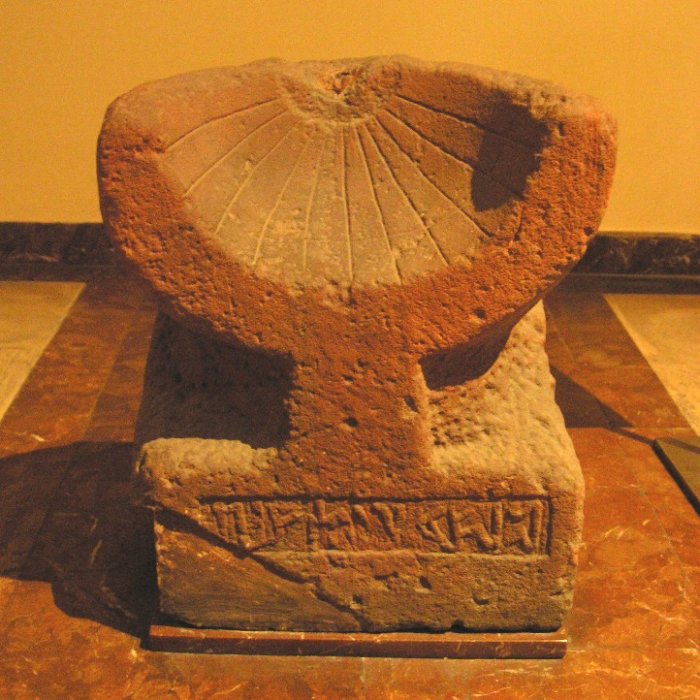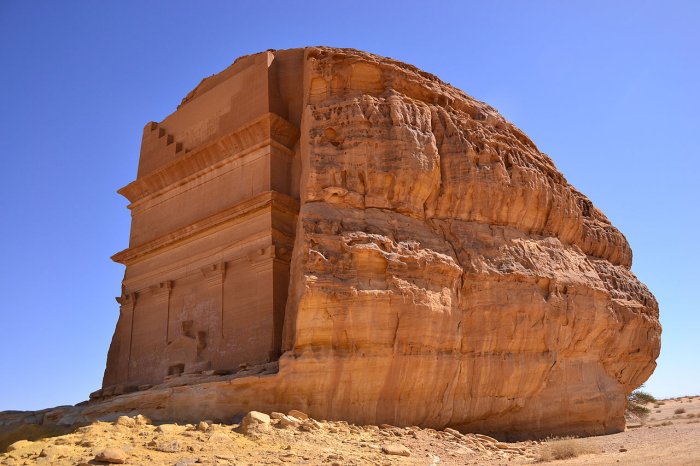Mada’in Saleh: Spectacular Rock-Cut Tombs And Monuments Reflect Great Skills Of Nabataean Builders
A. Sutherland - AncientPages.com - Located 20 km (12.4 mi) north of the Al-`Ula town, 400 km (248.5 mi) northwest of Medina, and 500 km (310.7 mi) south-east of Petra, in modern-day Jordan, the great ancient site Mada'in Saleh in Saudi Arabia continues to impress the modem world.
Aerial view of Madain Saleh. Credit: Adobe Stock - mellouk
It contains many magnificent tombs and monuments that reflect the excellent skills of the masons of their time. Mada’in Saleh, also called Al-Hijr or Hegra, dates back to the Nabataean civilization that flourished between the second and fourth century BC.
This beautiful place is considered one of the ´most important archaeological sites in Saudi Arabia and is called "The Capital of the Monuments." The site constitutes the kingdom's southernmost and largest settlement after Petra (modern-day Jordan).
The site's 111 monumental tombs, 94 decorated, and water wells are an outstanding example of the Nabataeans' architectural accomplishment and hydraulic expertise.
Mada’in Saleh is the first World Heritage site in Saudi Arabia. Although historians are not sure where the Nabataean civilization came from, there is a strong possibility that they came from the Hejaz region of northwest Saudi Arabia. Their history goes back thousands of years.
 Qasr al-Farid, an unfinished tomb that stands alone. Image source
Qasr al-Farid, an unfinished tomb that stands alone. Image source
At its peak, the Nabataean Empire stretched from modern-day Yemen to Damascus and from western Iraq into the Sinai Desert, at least, according to some historians.
No one knows how large their empire was. Written records of the Nabataean kingdom are sparse, as there are only a few surviving documents, scattered inscriptions, and graffiti.
However, many thousands of graffiti carved onto rocks and canyon walls demonstrate that almost every Nabataean could read and write, even the shepherds.
It makes us wonder why the Nabataeans did not write down their history. According to historians, the Nabataeans were nomads, dwelling in tents in the desert. They began as pastoral nomads, raising sheep, goats, and camels in the desert as many other Arabian tribes have done through the millennia. They also practiced oasis agriculture.
Yet, interestingly within a few short years, they also built spectacular and awe-inspiring monuments.
The magnificent city of Petra is so impressive that even today, tourists stare in awe at the incredible ruins. This remarkable city was hidden away in a cleft in the rock with only access through a narrow crack in a mountain.
Hegra Roman inscription dedicated to Emperor Marcus Aurelius. Image credit: aramcoworld.com - CC0 1.0
Most of the monuments and inscriptions found at the archaeological site date back to the 1st century BC and the 1st century CE. But the inscriptions in Lihyanite script and some recently discovered archaeological vestiges show evidence of human settlement as early as the 3rd or 2nd century BC.
One-third of the tombs, amongst the largest, are dated between 0-75 CE. Inscriptions engraved on rocks and facades of graves of Mada'in Saleh tell the history of this once great place, and every grave is like a cemetery for one family.
The Nabataeans watched the sky systematically and accurately, and there is proof of their astronomical observations.
According to scientists who studied the Nabataean palaces, temples, and tombs, these people were skilled astronomers. Splendid buildings were erected, bearing in mind the equinoxes, solstices, and other astronomical events that determined the Nabataean religion.
A sundial inscribed in Aramaic was found in Madain Saleh, dating back to the first century BC. Unknown ancient artist, picture by Ana al'ain - CC BY 3.0
A secondary route linked it to the port of Egra Kome, and two Nabataean sites unearthed on the shores of the Red Sea could be this port.
Considering the accounts of the Greek historian Diodorus of Sicily, it is known that the Nabataeans appeared in history before the end of the third century BC. Diodorus described them as nomadic Arab tribes whose wealth came from their involvement in the long-distance trade of incense and aromatics, mainly produced in the Yemeni region.
"The Nabataean knowledge of the location
Madain Saleh is the first World Heritage site. Image credit: Sammy Six - CC BY 2.0
of the routes and of the places where water could be found allowed them to control progressively the trans-Arabian trade route,” according to Dr. Laila Nehme, a French-Lebanese archaeologist and epigraphist of the Ancient Near East, known for her research on Nabataean writings, the evolution of the Nabataean script into the Arabic, and archaeological excavations at Petra and Mada'in Saleh.
With this important advantage also came a monopoly on the transport of trade goods. Thus, the Nabataeans could quickly accumulate wealth by imposing taxes along the prestigious international caravan trade route during late Antiquity.
Most probably, these remarkable people even started to make coins as early as the third century BC and more regularly in the second,” according to Dr. Nehme.
The ruins of the town of Hegra lie on the plain some distance from the timeless tombs and monuments.
Written by – A. Sutherland - AncientPages.com Senior Staff Writer
Updated on November 19, 2022
Copyright © AncientPages.com All rights reserved. This material may not be published, broadcast, rewritten or redistributed in whole or part without the express written permission of AncientPages.com
Expand for referencesMore From Ancient Pages
-
 Unsolved Enigma Of The Lost Ancient City In The Kalahari Desert
Ancient Mysteries | Aug 29, 2015
Unsolved Enigma Of The Lost Ancient City In The Kalahari Desert
Ancient Mysteries | Aug 29, 2015 -
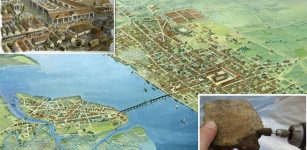 London Is Twice As Old As Previously Thought – New Discovery Reveals
Archaeology | Apr 9, 2020
London Is Twice As Old As Previously Thought – New Discovery Reveals
Archaeology | Apr 9, 2020 -
 What Was Lex Salica?
Ancient History Facts | Dec 13, 2017
What Was Lex Salica?
Ancient History Facts | Dec 13, 2017 -
 The City Of David – Why Is It So Controversial?
Biblical Mysteries | Jan 9, 2019
The City Of David – Why Is It So Controversial?
Biblical Mysteries | Jan 9, 2019 -
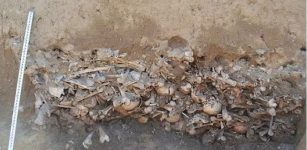 19th Century Mass Grave With Hundreds Decapitated “Vampires” Discovered In Polish Village
Archaeology | Jun 23, 2023
19th Century Mass Grave With Hundreds Decapitated “Vampires” Discovered In Polish Village
Archaeology | Jun 23, 2023 -
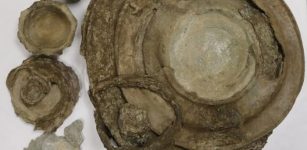 Rare 2,000-Year-Old Roman Hoard Discovered In Suffolk
Archaeology | Jul 5, 2023
Rare 2,000-Year-Old Roman Hoard Discovered In Suffolk
Archaeology | Jul 5, 2023 -
 Did Ancient Romans And Greeks Love As We Do? Perhaps Even More Hopelessly
Featured Stories | Jul 30, 2024
Did Ancient Romans And Greeks Love As We Do? Perhaps Even More Hopelessly
Featured Stories | Jul 30, 2024 -
 Mysterious 9,000-Year-Old Shaman Burial In Bad Dürrenberg – One Of Central Europe’s Most Spectacular Archaeological Discoveries
Featured Stories | Sep 15, 2023
Mysterious 9,000-Year-Old Shaman Burial In Bad Dürrenberg – One Of Central Europe’s Most Spectacular Archaeological Discoveries
Featured Stories | Sep 15, 2023 -
 Unexpected Historical Discovery: Remains Of Famous Sami Woman Recovered
Archaeology | Aug 22, 2022
Unexpected Historical Discovery: Remains Of Famous Sami Woman Recovered
Archaeology | Aug 22, 2022 -
 Two Inca Measurement Systems Calculated By Polish Architect
Archaeology | Nov 4, 2020
Two Inca Measurement Systems Calculated By Polish Architect
Archaeology | Nov 4, 2020 -
 On This Day In History: “Man In The Iron Mask” Died In The Bastille, Paris, France – On Nov 19, 1703
News | Nov 19, 2016
On This Day In History: “Man In The Iron Mask” Died In The Bastille, Paris, France – On Nov 19, 1703
News | Nov 19, 2016 -
 Humans Have Been In The Arctic For Over 40,000 Years – New Discoveries Reveal
Archaeology | Jul 12, 2022
Humans Have Been In The Arctic For Over 40,000 Years – New Discoveries Reveal
Archaeology | Jul 12, 2022 -
 Two-Story Houses With Balconies Unearthed In Ancient City Of Pompeii, Italy
Archaeology | May 18, 2018
Two-Story Houses With Balconies Unearthed In Ancient City Of Pompeii, Italy
Archaeology | May 18, 2018 -
 Ancient Human Remains Buried In Spanish Caves Were Subsequently Manipulated And Utilized
Archaeology | Sep 21, 2023
Ancient Human Remains Buried In Spanish Caves Were Subsequently Manipulated And Utilized
Archaeology | Sep 21, 2023 -
 Ancient Manuscript Reveals: Jesus Was Married And Fathered Two Children With Mary Magdalene
Archaeology | Nov 10, 2014
Ancient Manuscript Reveals: Jesus Was Married And Fathered Two Children With Mary Magdalene
Archaeology | Nov 10, 2014 -
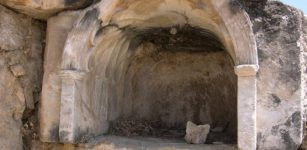 Plutonium: Dangerous Pluto’s Gate Was An Ancient Gateway To Hell At Hierapolis That Was Real
Featured Stories | Feb 18, 2017
Plutonium: Dangerous Pluto’s Gate Was An Ancient Gateway To Hell At Hierapolis That Was Real
Featured Stories | Feb 18, 2017 -
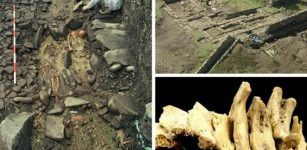 Isle Of May Was A Pictish Healing Center – Monks Used Herbs To Treat Sick And Dying People
Archaeology | Feb 16, 2018
Isle Of May Was A Pictish Healing Center – Monks Used Herbs To Treat Sick And Dying People
Archaeology | Feb 16, 2018 -
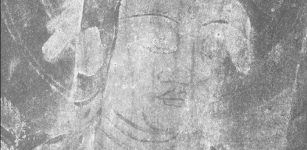 1,300-Year-Old Paintings Depicting Eight Buddhist Saints Revealed By Infrared Cameras
News | Oct 1, 2020
1,300-Year-Old Paintings Depicting Eight Buddhist Saints Revealed By Infrared Cameras
News | Oct 1, 2020 -
 Did The 8 Omens Of The Aztecs Foretell The End Of Their Civilization?
Civilizations | Jan 30, 2020
Did The 8 Omens Of The Aztecs Foretell The End Of Their Civilization?
Civilizations | Jan 30, 2020 -
 Battle Of Abrittus: Roman Emperor Decius And His Troops Ambushed And Defeated By Invading Goths
Featured Stories | Jul 1, 2019
Battle Of Abrittus: Roman Emperor Decius And His Troops Ambushed And Defeated By Invading Goths
Featured Stories | Jul 1, 2019

